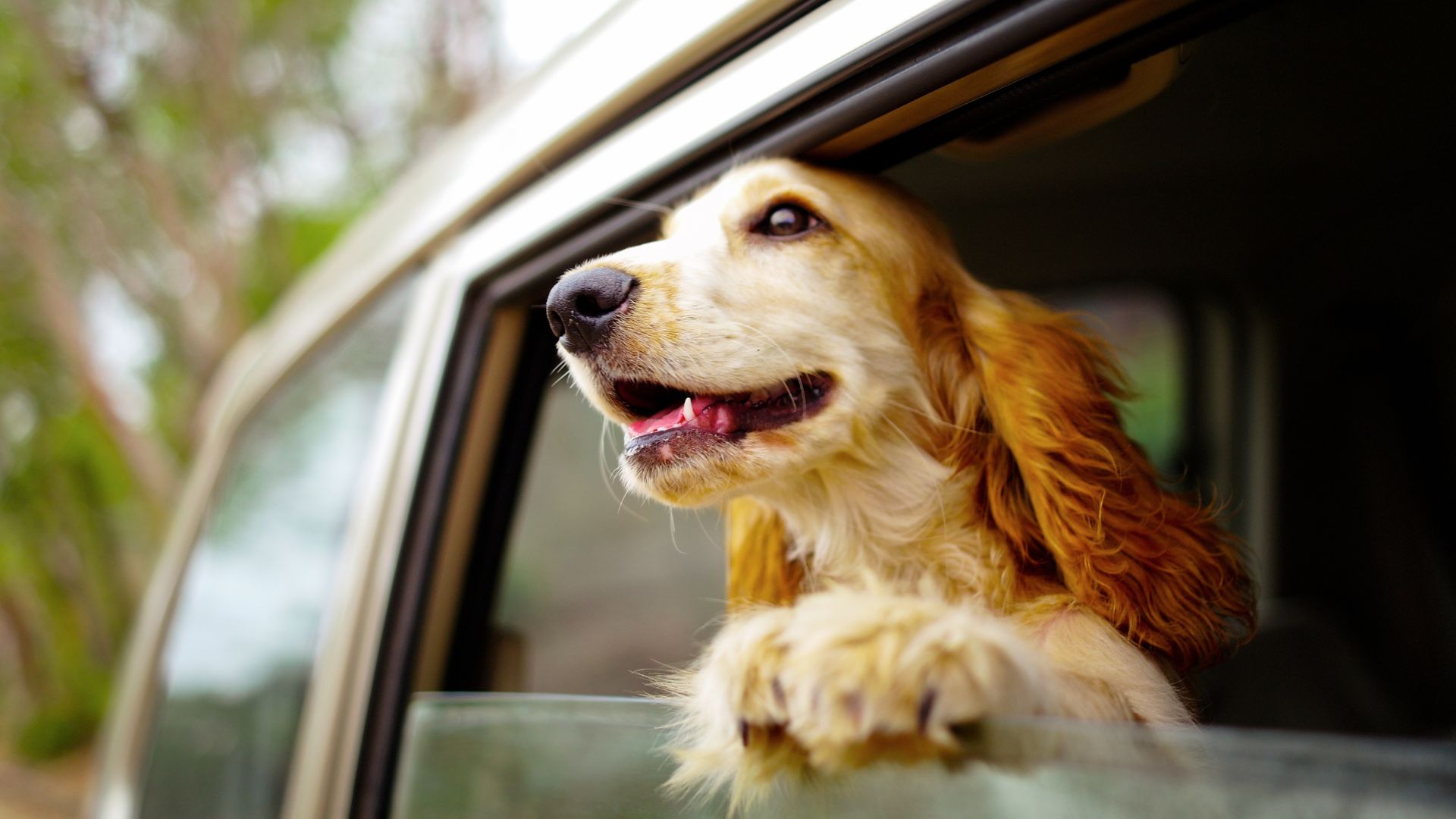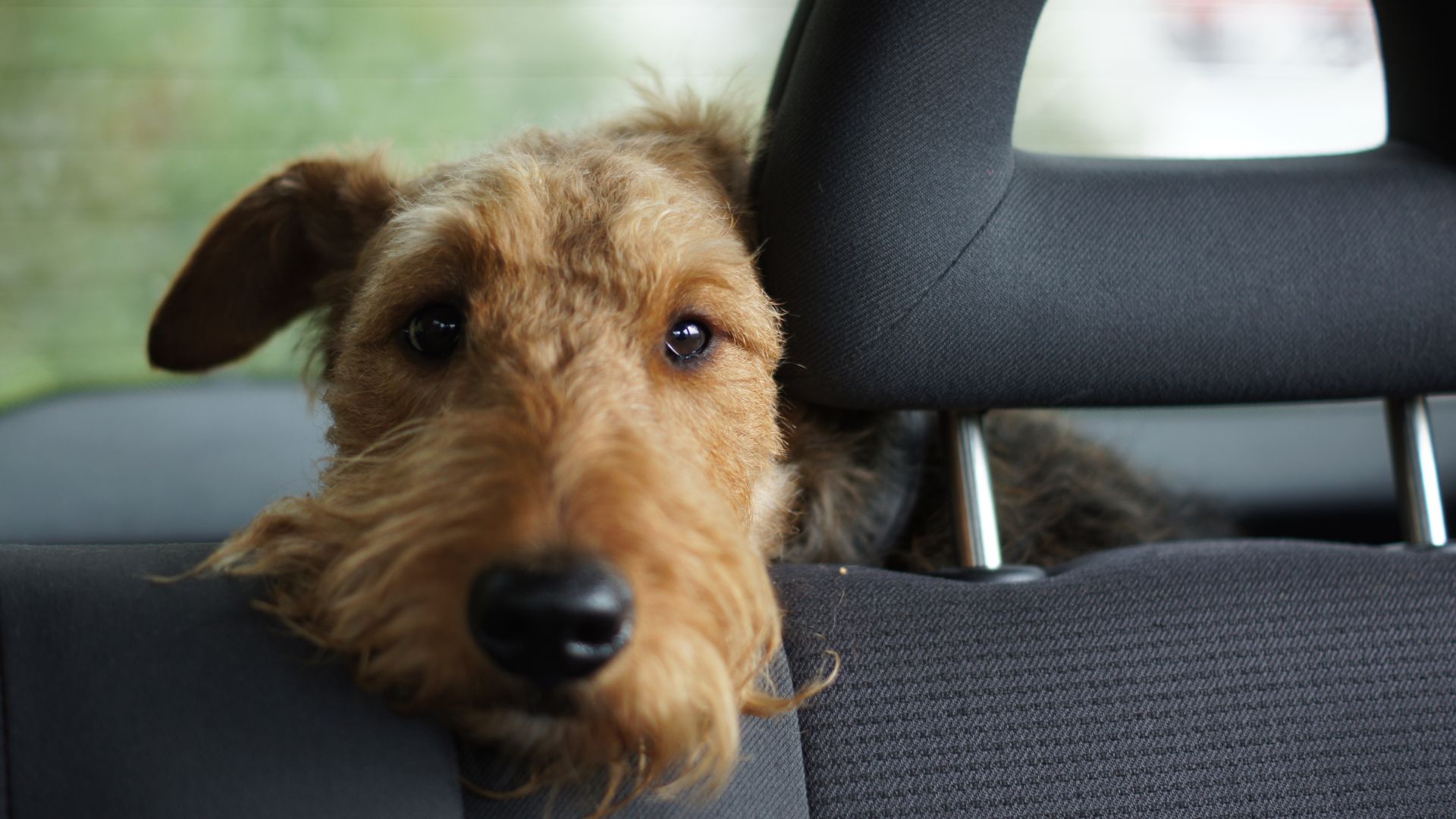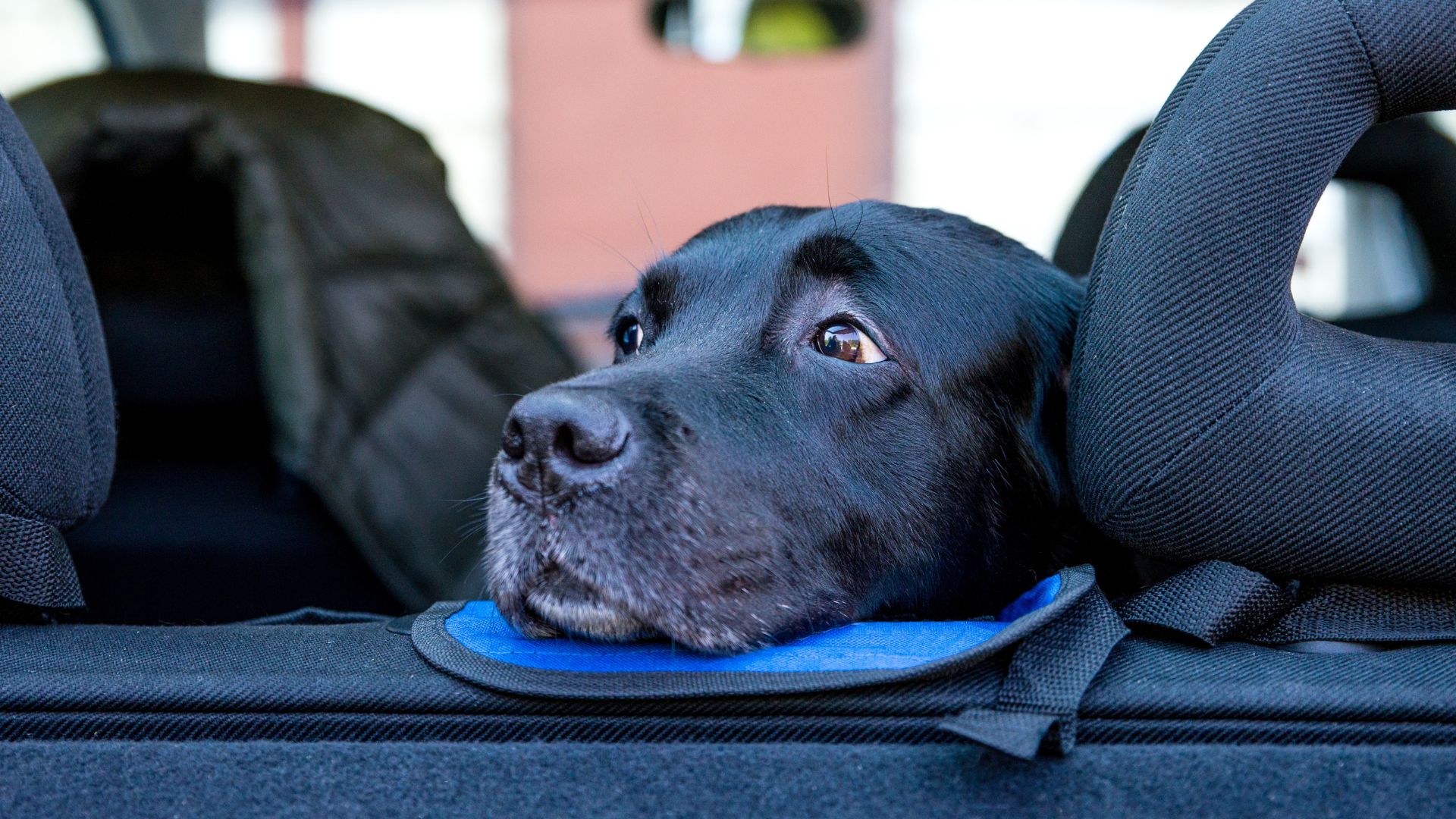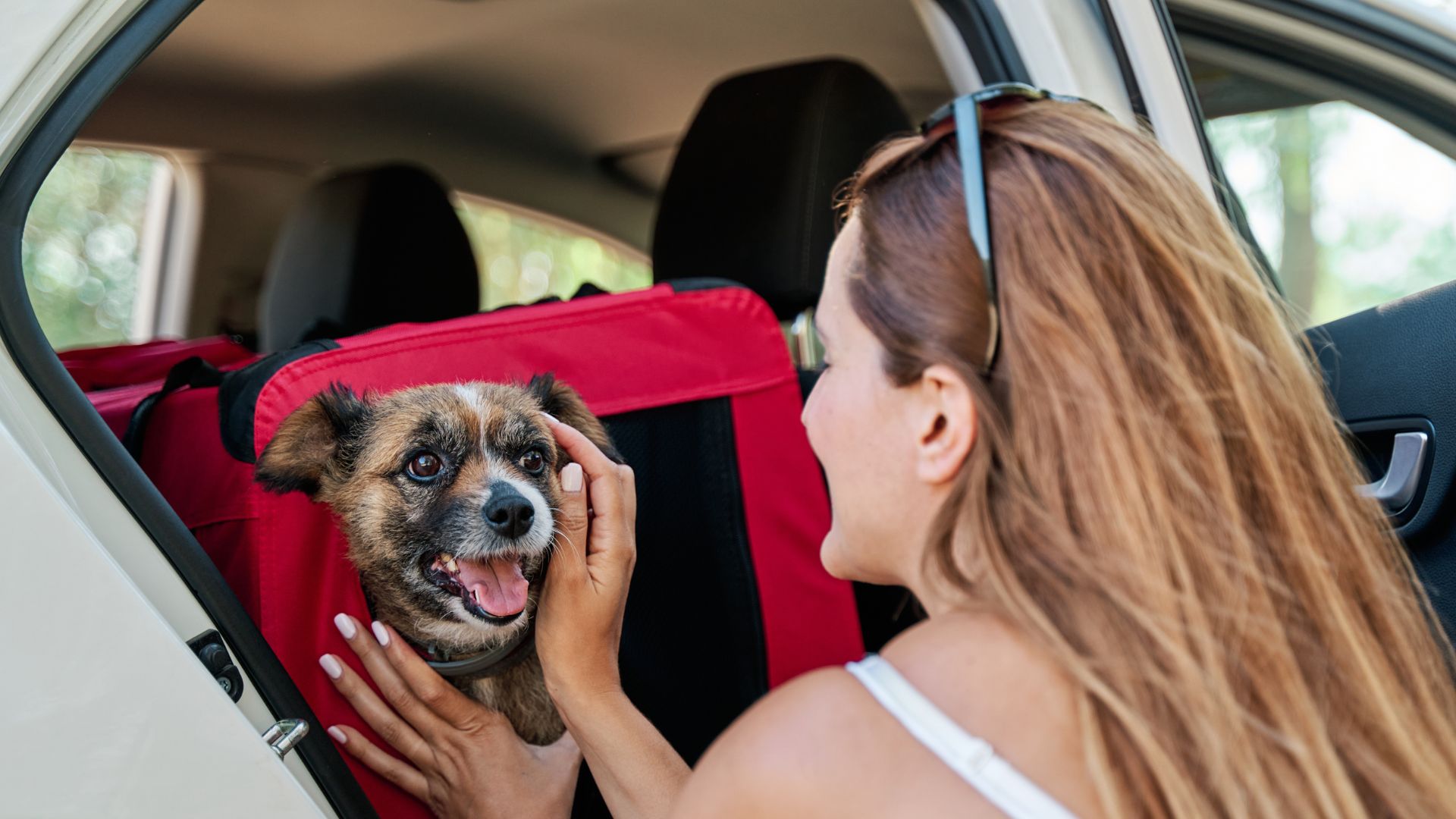Dog travel sickness: Vet shares 7 ways to reduce the symptoms
Our vet reveals how to prevent and treat dog travel sickness.

Dog travel sickness is no joke and it can make your pooch miserable. I’ve been a vet for eight years, and I’ve dealt with my fair share of travel-sick dogs. Sometimes, owners don’t realize their dog is motion sick and miss the symptoms. Other times, I’ve seen owners get a horrid shock the first time they travel with their pets.
Getting one of the best dog travel crates is an important step for safety and comfort, and it can also reduce car sickness and help to keep any vomit contained.
Below, I’ve shared my top tips for spotting motion sickness in dogs and reducing the symptoms so that everyone can relax and enjoy the journey.
What causes dog travel sickness?
Just like humans, dogs can feel travel sick when their bodies and eyes feed different messages to their brains.
The eyes see fast, forward motions or stillness inside the car. The body and inner ear feed in different messages, saying they’re feeling forces as the car moves around bends. The brain can’t cope with the different messages it’s receiving, and the result is nausea.
Unlike people, dogs often have an element of fear and anxiety to their nausea. Dogs who have come to associate the car with sickness may be more fearful, but the fear of the car itself can also induce sickness. This is why it’s so important to train a dog in the car from a young age wherever possible.

Signs your dog is feeling travel sick
If your dog is suffering from travel sickness, there are a few tell-tale signs to watch out for.
Get the best advice, tips and top tech for your beloved Pets
Don’t assume that a travel-sick dog will vomit – as I can attest from my own motion sickness, there is a whole range of nausea symptoms before actual vomiting in dogs starts, and these are just as unpleasant as actual vomiting. You might see:
- Drooling
- Panting
- Lip-licking
- Swallowing
- Shaking/shivering
- Retching
- Vomiting
Luckily, these symptoms usually stop within a few minutes of the car stopping — especially if you can provide them with some distraction and maybe a cool drink.

How to prevent and reduce the symptoms of dog travel sickness
Let’s look at the best ways to stop dogs from being sick in the car. Here are seven things you can try:
1. Train your dog to use the car
The most important thing to prevent travel sickness is to train your dog to use the car. If you already have a car-sick dog, re-training is also necessary. Car sickness and anxiety in dogs are linked, so helping your dog feel calm in the car is important. Practice can help your dog’s brain get used to those mixed messages.
As always with training, the key is to start slowly and break it down into small steps. Start by jumping your dog into the car, rewarding them, then letting them back out. After a few days, close the car door, then open it and let them out. A few more days of that, and you can move on to turning the engine on for a few minutes.
Need help? Read how this pet owner trained her dog to enjoy car rides.
2. Provide access to clean drinking water
Whenever I’m sick, sipping on water helps, and I’m sure it’s the same for you. Clean, fresh water helps to wash down excess saliva and provides calming signals to the brain. It’s also essential for dogs who are continually panting from fear or car sickness – a dry mouth doesn’t feel nice! Offering your dog water in a non-spill bowl can help keep car sickness to a minimum.
This dog bowl is perfect for car journeys, thanks to the non-spill design.
3. Provide regular breaks on long journeys
Your dog might be able to hold their bladder for many hours, but regular breaks are more than just toilet stops. They let the brain’s messages return to normal and give their stomach a chance to settle. If you have a dog that really struggles with car sickness, expect a slower trip. It might take longer, but if you plan some great stops along the way, you can make it part of your holiday. For more tips to make the journey comfy for your dog, see our article on how to travel with a dog.
4. Provide proper restraint
Make sure your dog is properly restrained in the car. Not only is this essential for safety, but it can also reduce sickness by reducing excessive body movements. If your dog has previously been car sick while in a harness, try swapping to a crate, or vice versa.

5. Time their meals
Traveling on a full stomach can make motion sickness worse, but at the same time, hunger doesn’t help either. Feed your dog two to three hours before they travel so food has time to leave their stomach but they aren’t actually hungry.
6. Try anti-anxiety products
A lot of dog motion sickness is rooted in anxiety, and in turn, sickness can make the anxiety worse. There are lots of natural anti-anxiety products out there that can help soothe and calm your dog. I like Pet Remedy and Adaptil sprays for the car (like this one on Amazon), or an Adaptil collar for long journeys. Oral calming tablets, like Calmex, can also help. Make sure to follow instructions on the packet or from your vet for best effect.
Pet Remedy Natural De-Stress and Calming Spray
This calming spray will help your dog to feel more relaxed, containing valerian, vetiver, and calming essential oils. It's PH-neutral and can be used on furniture.
7. Consider medication
Nobody wants to medicate their dog constantly, and dog travel sickness medicine is not suitable for everyday use. But if you’re planning a long trip with a travel-sick dog, car sickness medicine for dogs might be a good idea. A medication called maropitant (marketed as Cerenia) is often used to alleviate car sickness in dogs. It’ll need to be prescribed by a vet, so make an appointment to talk to them about your dog’s nausea.
Dogs get travel sickness just like humans do, although dogs have an element of anxiety in their nausea too. Preventing dog travel sickness involves proper car training, but anti-anxiety products and proper restraint can also help. For dogs that really struggle with travel sickness but need to go on a long journey, medication is available.
Off on a car journey with your dog? Don’t forget to check out our advice on how to secure a dog in a car and our dog car safety tips. Or, if you’re planning a big trip, why not see the best travel destinations for dogs?
After graduating as a vet from the University of Nottingham in 2016, Dr. Joanna Woodnutt went on to practice companion animal medicine in the Midlands. She quickly developed a love of consulting and helping clients with medical problems such as dermatology, behavior and nutrition - anything that involved helping clients understand their pets better.
Jo started writing about pet health in 2017, realizing that it meant she could help even more pet parents. Since then, she has written for countless online and print publications and is a regular contributor for Edition Dog Magazine. Jo is the director of The Veterinary Content Company, which she founded in 2020. She is also the founder of Petlearnia, a platform that provides pet e-learning courses for pet parents.
Jo now lives in the Channel Islands with her husband Ian and terrier Pixie.



